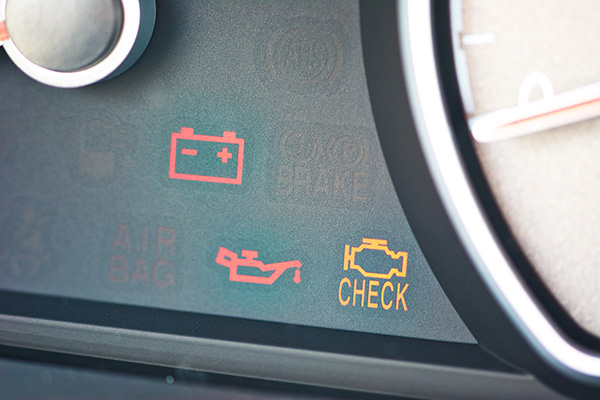
When the battery light suddenly appears on your dashboard, it can be quite startling. It's a warning signal that requires prompt attention, but what exactly does it indicate? Knowing the reason behind this light can prevent a breakdown and ensure you don't get stranded on the side of the road.
The Battery Light Warning
The battery light on your dashboard is not just a random warning; it's your vehicle's way of communicating a problem related to the charging system. This light typically features a battery icon and may come on for a few reasons, indicating that something in the electrical system needs attention. When the light is illuminated, it usually means that the car's battery is not being charged properly, which can affect the performance of your vehicle.
Common Reasons for the Battery Light to Appear
1. Faulty Alternator
The alternator is responsible for charging the car's battery and powering the electrical system while the engine is running. If your alternator is malfunctioning, the battery light will often illuminate. A faulty alternator fails to provide adequate power to the battery, which can lead to a situation where your vehicle's electrical components are not functioning correctly.
2. Battery Issues
While less common, a worn-out or damaged battery can also trigger the battery light. Over time, batteries can lose their ability to hold a charge, especially in extreme temperatures. If your battery is old or has a dead cell, it might not be able to support your vehicle's electrical needs, leading to the battery light coming on.
3. Loose or Corroded Battery Cables
Sometimes, the problem might be as simple as loose or corroded battery cables. These cables connect the battery to the electrical system, and if they become loose or corroded, they can disrupt the flow of electricity. This can cause the battery light to turn on as the system struggles to maintain proper charge.
4. Serpentine Belt Issues
The serpentine belt drives the alternator and other essential engine components. If this belt snaps or becomes loose, the alternator won't be able to generate power effectively. This issue can result in the battery light appearing, signaling that there is a problem with the belt or related components.
What to Do When the Battery Light Comes On
Seeing the battery light should prompt you to take immediate action. Here's a quick guide on what to do:
Check Battery Connections
Pull over safely and inspect the battery connections. Ensure that the cables are tightly connected and that there is no visible corrosion. If there is, clean the terminals and reconnect them.
Inspect the Serpentine Belt
Look at the serpentine belt for any visible signs of damage or looseness. If you see that the belt is damaged or missing, it will need to be replaced.
Test the Alternator
If you're able, test the alternator to see if it's functioning correctly. Many auto parts stores offer free testing services, or you can consult a professional for a more thorough examination.
Visit Stang Auto Tech
If the above steps don't resolve the issue or if you're unsure about performing these checks yourself, it's best to visit a professional repair shop. We can perform a comprehensive diagnostic to determine the exact cause of the battery light and recommend the necessary repairs.
Preventive Measures to Avoid Battery Light Issues
To minimize the chances of the battery light coming on in the future, consider these preventive tips:
- Regular Maintenance: Schedule regular maintenance checks for your vehicle. This includes inspecting the battery, alternator, and serpentine belt during routine services.
- Battery Replacement: Replace your battery every few years, or as recommended by the manufacturer, to ensure optimal performance.
- Keep Connections Clean: Periodically check and clean battery connections to prevent corrosion.
Battery light giving you trouble? Let Stang Auto Tech take care of it. From inspections to repairs, our experts are here to keep your vehicle in excellent condition. Contact us today for professional service!